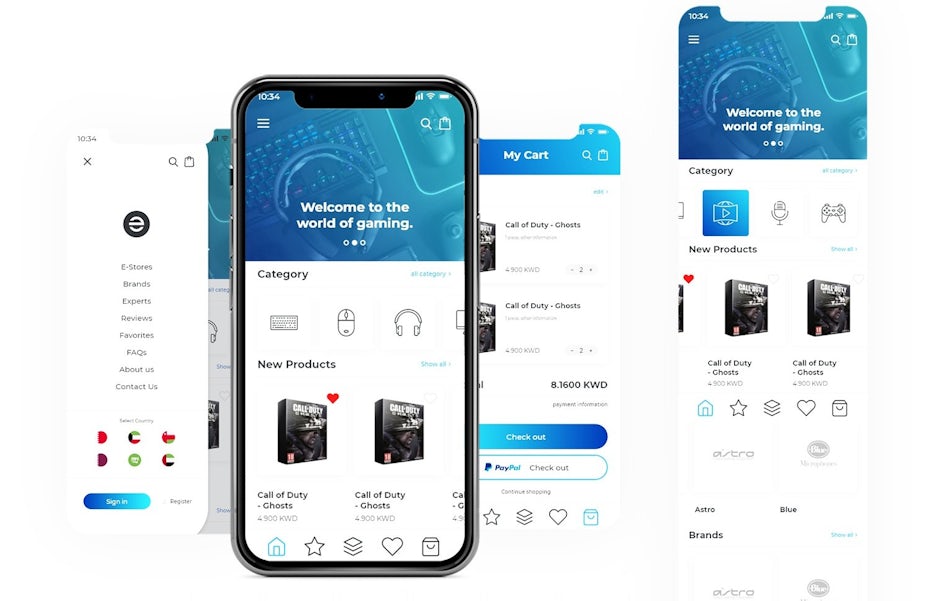Drive Website Traffic and Conversions with Tailored Mobile Optimization Solutions

The Ultimate Overview to Mobile Optimization: Strategies for Enhancing Site Efficiency on Smartphones and Tablets
The techniques for enhancing website efficiency on mobile systems go beyond mere adjustment; they include a detailed technique that includes receptive style, rate optimization, web content strategies, and customer experience enhancements. By delving right into the ins and outs of mobile optimization, organizations can not just satisfy customer assumptions yet additionally remain in advance in a competitive electronic landscape.
Significance of Mobile Optimization
Mobile optimization plays a pivotal function in improving user experience and driving conversion rates in the ever-evolving digital landscape. With the boosting use of smartphones and tablets for surfing the net, making certain that sites are enhanced for mobile tools has come to be important for companies - Mobile Optimization. A mobile-optimized website not only adapts perfectly to different display dimensions however additionally tons promptly, providing individuals with a smooth and enjoyable browsing experience
In today's fast-paced globe, customers expect instantaneous access to info on the go. A site that is not enhanced for mobile devices dangers losing potential customers due to slow packing times or a poor interface. By purchasing mobile optimization, companies can satisfy the needs of their mobile target market, leading to greater interaction and increased conversions.
In addition, internet search engine like Google prioritize mobile-friendly internet sites in their rankings, making mobile optimization necessary for boosting exposure and attracting organic traffic. Mobile Optimization. Overall, the value of mobile optimization can not be overstated, as it directly influences individual complete satisfaction, conversion prices, and overall service success in the digital world
Responsive Style Strategies
Executing responsive style techniques makes certain that internet sites dynamically adjust their layout and material based upon the user's device display size, giving a constant customer experience throughout different platforms. One of the most typical techniques made use of in receptive design is producing fluid grids that enable material to resize proportionally to the screen dimension. This makes certain that elements on the website keep their relative spacing and plan, enhancing the viewing experience for individuals on different gadgets.
Furthermore, using flexible pictures that can scale with the dimension of the viewport assists avoid pictures from being cropped or distorted on smaller sized displays. CSS media questions play a crucial role in responsive layout by enabling programmers to apply particular styles based upon the device features such as screen width, height, and orientation. By leveraging media inquiries, internet sites can adapt their format and design to match smart devices, tablets, and desktop computer screens seamlessly.
Integrating responsive layout techniques not just boosts user experience yet also contributes to improved online search engine positions, as search engines like Google focus on mobile-friendly websites in their mobile search results page. By embracing receptive style, web sites can satisfy the varied needs of users accessing web content on a variety of tools, ultimately driving engagement and conversions.
Rate and Efficiency Optimization

One secret strategy is enhancing photos and multimedia web content to minimize documents sizes without jeopardizing high quality. Compressing photos, leveraging modern-day photo styles like WebP, and careless loading offscreen photos work techniques to accelerate load times (Mobile Optimization). Reducing HTTP requests, leveraging browser caching, and reducing web server action times are essential steps in enhancing performance.
Executing a web content shipment network (CDN) can also significantly enhance website speed by distributing web content across numerous servers globally, decreasing latency for individuals accessing the website from various places. Focusing on important above-the-fold material and postponing non-essential scripts can better improve perceived performance. By concentrating on rate and efficiency optimization, websites can supply a seamless and rewarding user experience on mobile gadgets.
Mobile-Friendly Material Methods
Mobile-friendly web content approaches involve tailoring the discussion of info to match the smaller displays and on-the-go nature of smartphone and tablet computer individuals. Furthermore, breaking up web content right into much shorter paragraphs and making use of bullet factors go to this site can assist improve readability and make it less complicated for users to consume details quickly.
Integrating engaging visuals, such as pictures and video clips enhanced for mobile watching, can likewise boost the overall user experience. These visuals must be relevant, top quality, and lots quickly to prevent customers from wearying. In addition, integrating interactive elements like quizzes, surveys, or studies can increase customer engagement and encourage energetic involvement.
Customer Experience Enhancements
Building on the foundation of mobile-friendly web content strategies, improving individual experience requires maximizing every touchpoint to ensure seamless interaction and complete satisfaction for mobile users. One critical facet of enhancing customer experience on mobile phones is making sure quickly packing times. Users anticipate internet sites to load quickly on their smart devices and tablets, and any delays can lead to stress and enhanced bounce rates. Executing receptive design is one more essential element in improving customer experience. Receptive style makes sure that websites adapt to numerous screen sizes and resolutions, supplying a constant and straightforward experience across different gadgets.
Enhancing types for mobile users by reducing the number of areas and utilizing auto-fill features can likewise boost the general individual experience. By focusing on these individual experience enhancements, sites can properly engage and preserve mobile site visitors.
Verdict
In verdict, mobile optimization is important for enhancing internet site performance on smartphones and tablets. By executing responsive design strategies, optimizing speed and efficiency, producing mobile-friendly web content, and improving individual experience, companies can successfully get to and engage with their mobile audience. It is necessary for sites to adapt to the increasing mobile usage fads in order to stay competitive in the digital landscape.